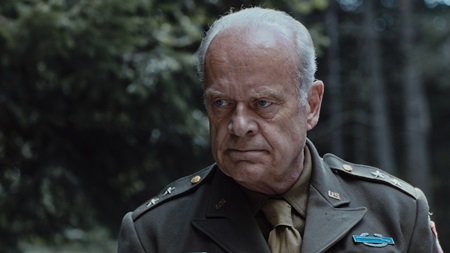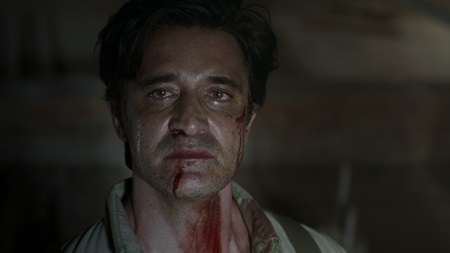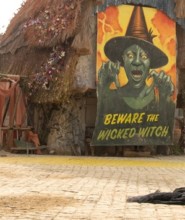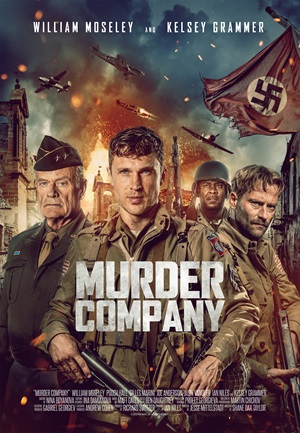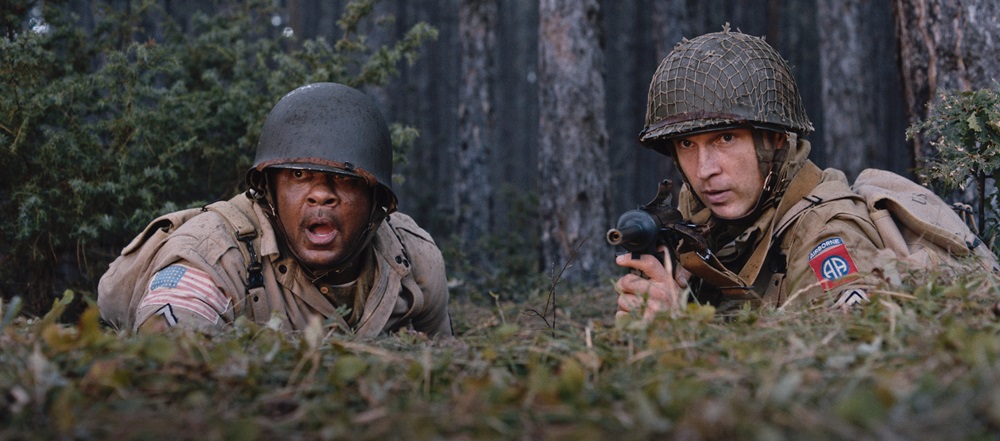
Disposable WWII Actioner Murder Company Fires Too Many Blanks
Murder Company is an ultra-low budget, men-on-an-impossible-mission WWII flick directed with passionate commitment by Shane Dax Taylor (The Best Man) and features a couple of solidly interesting performances from Joe Anderson and Gilles Marini. It also has precious little weight, evaporates from memory the moment it ends, and refuses to make the most of its suitably isolated, densely forested Bulgarian (subbing for the French countryside) locations.
This is unfortunate, mainly because Taylor has been on the cusp of making something good for a while now. The guy is a competent filmmaker, and his affinity for the scenario penned by screenwriter Jesse Mittelstadt is apparent early on. The opening section is suitably chaotic, and the film’s diverse ensemble comes together with authentic rapidity. This pre-mission prologue concludes with a decent ambush sequence where all the primary characters unexpectedly join forces to take down a German armored vehicle. While the budget limitations Taylor had to have been dealing with are obvious, this is still a fun, energetic set piece that starts things off with a decent bang.
It is when our ragtag contingent of nonconformists is given their orders that things begin to fall apart. The plot itself is simple enough. As part of the D-Day invasion, a small group of U.S. paratroopers — including Smith (Anderson), Southern (William Moseley), and Coolidge (Pooch Hall) — are separated from their various units. After showcasing uncommon skill in battle, General Haskel (Kelsey Grammer) decides to leave this ragtag collection together and tasks them with busting French Resistance leader Daquin (Marini) out of a Nazi stronghold.
Normally that would be enough for one movie, but not Murder Company. Once they snatch Daquin, the group is next commanded to take the Frenchman behind enemy lines so he can assassinate SS General Erik Ramsey (Roman Schomburg). Not only is he a certified monster responsible for numerous war crimes, but now that the Allies have landed at Normandy, he’s also vital to the German counterattack. If he goes down, so do the Nazi supply lines.
Or something like that. I feel like there’s a ton that Mittelstadt wants to cover and, much like Saving Private Ryan, most of that has to do with the ethics and morals of “killing” and “protecting” when soldiers are no longer on the battlefield and are instead out on their own on a top-secret mission. But with so little time to dive into things (the film is a lean, mean 86 minutes), all of the interpersonal character-driven complexities of this situation are mostly left on the cutting room floor. Much like the American soldiers themselves, it’s difficult to get a firm grasp as to why this mission is so important and what the benefits — other than to satiate Daquin’s thirst for revenge — of taking out one German officer is supposed to be as far as the grand scheme is concerned.
But that’s not the major issue. Maybe had Taylor shot this one in black and white (which, admittedly, was never going to happen) the whole thing wouldn’t look so cheap but, in color, if you’d told me this feature had been shot out in the woods behind my grandfather’s Tenino, WA farmhouse by overeager 12-year-olds and not in the lush, secluded forests of Bulgaria I’d totally believe you. There’s no visual punch to anything that happens, and other than that aforementioned opening, none of the film’s numerous action sequences have an ounce of tension or a single tablespoon of excitement.
Pity, because the actual ensemble is solid. Hall and Moseley take stock characters and give them heft, while Schomburg makes one of 2024’s most underdeveloped villains semi-threatening. Best of all are Anderson and Marini (the latter in particular), the two actors adding a noticeable layer of emotional weight that kept me watching even when everything else surrounding them fell catastrophically to pieces.
It’s difficult not to wonder what could have been had Taylor had a smidgen of extra days on his shooting schedule or a few extra dollars added to the budget (or both). There is an unfinished quality to the bigger set pieces, most notably the climax set inside and around Ramsey’s fortified headquarters. It was almost as if the producers ran out of money to pay the special effects team and digital artists for all the promised explosions that frustratingly never materialized. Because of this, editor Ben Daughtrey is forced to craftily cut things to hide all of this as best he can. He does not meet with success.
Because of all of that and more, I find it difficult to rag on this film with any conviction. Taylor is going to make a good move at some point, maybe even a great one, but this isn’t it. As B-grade WWII adventure throwbacks to the 1950s and ‘60s are concerned, Murder Company is firing far too many blanks, making this a lackluster mission difficult to get enthused about.
Film Rating: 2 (out of 4)


